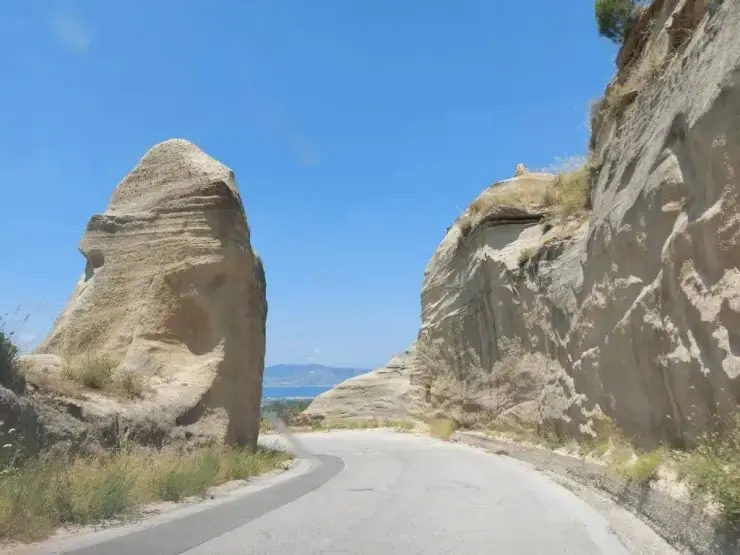The Amato mill route, between history and nature
Discovering the ancient mills in the Arbëreshë village of Amato (CZ)

Sport and nature
Percorso dei Mulini, Amato - Regione Calabria
Ready to take an excursion around one of the oldest Italian-Albanian settlements in Calabria?
The Amato mills route, around the village of the same name in the province of Catanzaro, is the perfect opportunity for an original out-of-town excursion to discover an ancient and unspoilt place.
The Amato mill route is a fascinating historical-naturalistic itinerary in the valley, along the course of the Corace and Amato rivers and the Fosso Acquafredda stream, to discover the ancient water mills that, in ancient times, fuelled a flourishing local economy. At present, the visit is only recommended in the company of experienced local guides.
Let us now discover the small town of Amato, in the Presila of Catanzaro, and how to access the Amato mills route.
The village of Amato
Amato is one of the oldest towns in Calabria: there is already evidence of it in Pliny the Elder, who says its inhabitants originated from the ancient city of Lametia, on the promontory overlooking the Gulf of Sant'Eufemia. In 1060, when the lord of Amato was Count William of Altavilla, the feud seems to have been almost uninhabited.
It was not until 1479 that it was repopulated, spurred on by new arrivals: the Albanian communities that had escaped the Ottoman-Turkish raids and taken refuge in southern Italy.
For almost two centuries, the Italo-Albanians (arbëreshë) of Amato spoke only the language of their fathers, keeping intact the ancient Greek-Byzantine rite, customs and traditions of their country of origin.

Starting in the 18th century, the Albanians gradually lost their culture and language, of which today only a few place names remain around the village and the valley, such as the Fountain of the Greeks and the Mill of the Greeks.
The history of the town of Amato is also marked by the succession of ruinous earthquakes that, starting in the 18th century, destroyed the historic centre several times.
Of Amato's ancient past, the 17th-century Palazzo Timpone and the 18th-century Palazzo Rossi, the birthplace of the preacher of the same name, Mauro and Jenzi remain. In the historical centre, there are also the remains of the original feudal castle (11th century), of which only the portal and a turret restored for private habitation now remain visible.
Worth visiting are the Mother Church, which houses a 17th century half-bust of St Francis of Paola, and the ‘’Chiesulìlla‘’, an ancient chapel dating back to 1100, perhaps the first building of worship erected by the people of Amato.
During the 17th century, the Cigala-Doria family, of Genoese origin, bought the land on the banks of the Corace and Amato rivers, building the production complex that is the subject of our excursion today: the Amato mills and the sophisticated system for grinding wheat and processing olives in the trappeti that, at the time, allowed the production of renowned flours and oils exported as far as Naples and Messina.
Amato mills route
The Amato mills route allows visitors to admire the remains of mills built mainly in the 17th century under the feudal Cigala-Doria family in the valley of the Corace and Amato rivers and the Fosso Acquafredda stream.
The layout of the mills is almost identical, with a rectangular plan, while the dimensions vary depending on the number of millstones present. In ancient times, there were also large tanks for collecting water, which was conveyed to the mills, to drive the millstones, through special channels.
The most representative and best-preserved building to be found along the route of the Amato mills is the so-called Mill of the Greeks, in reference to the ancient Greek Orthodox origins of the population.

The structure, originally two-storeyed, remained in operation until the mid-20th century, when the miller still passed through the village, who, on the back of a mule, collected grain from private homes, took it to be ground and, once transformed into flour, resold it to the population.
The charm of the Amato mills route also lies in the beauty of the natural landscape it passes through, rich in waterfalls, indigenous flora and fauna and evidence of a time when man's interventions on nature were still harmonious.
Please note that, at present, the visit is only recommended in the company of experienced local guides.
https://calabriastraordinaria.it/en/news/the-amato-mill-route-between-history-and-nature

